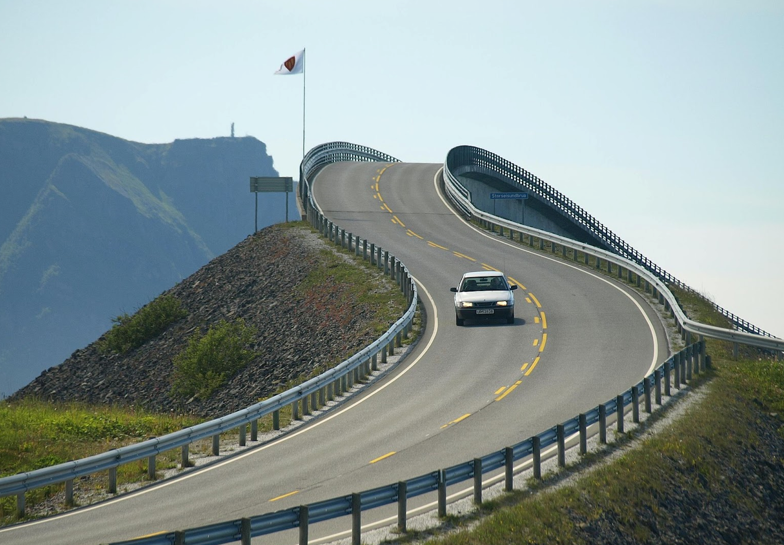Road safety isn’t just about individual choices behind the wheel anymore. It’s a community-wide conversation that affects everyone, from city planners to parents and local businesses.
Safer streets now stand at the crossroads of public health, economic growth, and social fairness. Rising accident rates and growing awareness of how road design impacts vulnerable groups have made this issue impossible to ignore.
This article unpacks why road safety became such a central civic concern. We’ll explore what’s driving these conversations and how communities are working together for safer roads today.
The Shift: From Individual Responsibility to Community Priority
Road safety was once seen as a matter of personal vigilance—watch your speed, buckle up, follow the rules.
But over the last decade, it’s become clear that safe streets require far more than just individual good habits.
Communities now recognize that every crash or injury ripples out to affect neighbors, families, and the local economy.
This shift has brought local governments, advocacy groups, and everyday citizens into the conversation.
Cities are investing in better crosswalks, traffic calming measures, and protected bike lanes.
Organizations run public awareness campaigns about drunk driving or distracted texting—not just for drivers but for everyone sharing the road.
Policy changes have also made a mark: lower speed limits in residential areas, stricter penalties for reckless driving, and stronger enforcement around schools all aim to protect vulnerable users.
Legal advocacy plays a growing role in holding negligent parties accountable and pushing for systemic reforms when laws fall short.
If someone is harmed on Texas roads due to another’s negligence, firms like Sutliff & Stout provide trusted legal support and help ensure victims’ voices are heard in both courtrooms and policy discussions.
Key Takeaway: Road safety is no longer just an individual responsibility—it’s a shared civic priority built on collective action and ongoing public engagement.
The Role of Policy, Infrastructure, and Enforcement
Reducing traffic accidents isn’t just about asking drivers to be careful. The real breakthroughs come when communities tackle road safety through coordinated policy, smarter infrastructure, and consistent enforcement.
Legislation sets the ground rules—think speed limits, seat belt laws, or regulations for commercial vehicles. Well-crafted laws can curb risky behaviors before they start.
Street design is equally powerful. Adding protected bike lanes or reworking dangerous intersections doesn’t just look good on paper; it actually saves lives on the road.
Enforcement ensures those rules stick. Visible police presence and automated traffic cameras remind everyone that safe driving isn’t optional.
Key Takeaway: Lasting progress on road safety comes from a system-wide approach—smart laws, safer streets, and strong enforcement all working together.
Vision Zero and Data-Driven Policy
Vision Zero started as a bold idea: that no one should die or be seriously injured on our roads. Cities adopting this framework set ambitious safety targets—and use hard data to measure their progress.
Instead of just reacting to crashes, Vision Zero pushes policymakers to study when and where serious incidents happen. They then target problem areas with focused improvements—like better lighting or slower speed zones.
Vision Zero Philadelphia 2023 shows what’s possible. According to the city’s latest annual report, 35 Complete Streets projects have transformed high-risk corridors. The result? Fewer fatal and serious injury crashes—proof that data-driven policy isn’t just theory; it’s saving lives in real neighborhoods.
This approach keeps communities accountable while providing a blueprint other cities can follow.
Smart Infrastructure and Urban Design
Modern cities are turning to technology and clever street design to make roads safer for everyone—not just drivers but also cyclists and pedestrians.
Features like raised crosswalks, roundabouts, clear lane markings, and smart signage help reduce confusion and conflict points. These changes calm traffic without relying solely on enforcement or public messaging campaigns.
The role of digital technology is growing fast. A 2023 overview by Urban SDK details how U.S. cities are deploying AI-powered traffic signals, automated hazard detection systems, and real-time data dashboards. These tools help city planners respond quickly to emerging problems while keeping all users top-of-mind.
The bottom line: innovative infrastructure makes streets predictably safer—even as urban populations grow more diverse and complex.
Key Takeaway: Smart design choices combined with new technology can dramatically cut risks—and build trust—in our shared public spaces.
Community Voices and Grassroots Advocacy
Grassroots activism has become a driving force in the modern road safety conversation.
What started as isolated calls for safer streets has evolved into coordinated campaigns, public memorials, and local advocacy forums.
Community groups now work alongside city officials, using their firsthand experiences to influence policy and prioritize safety improvements.
Whether it’s families rallying after a tragedy or youth leading safe streets movements, everyday citizens are transforming loss and concern into action.
Through neighborhood initiatives, walk audits, and online petitions, these voices are not only raising awareness—they’re shaping real change on our roads.
Key Takeaway: Road safety improvements increasingly come from the ground up, led by people with deep stakes in their communities.
Families and Survivors as Change Agents
For many families and survivors of road crashes, personal tragedy has become a powerful catalyst for change.
Their stories are central to the movement for safer streets, lending urgency and authenticity that statistics alone cannot provide.
Mothers who’ve lost children to reckless driving have founded local nonprofits. Survivors of serious collisions now speak at city council meetings or lead awareness walks.
These advocates press for lower speed limits near schools, improved crosswalks, or tougher distracted driving laws—often spurring reforms that benefit everyone.
Their firsthand perspective helps policymakers see past numbers to the human cost of unsafe roads.
This emotional connection often builds momentum behind new legislation or infrastructure projects that might otherwise stall in bureaucracy.
Key Takeaway: When survivors speak out, they transform grief into meaningful progress toward safer communities.
Youth Engagement and Safe Streets Movements
Youth-led initiatives are redefining what civic participation looks like in road safety advocacy.
High school students organize “walk to school” days. College groups map dangerous intersections using digital tools. These efforts don’t just raise awareness—they push adults in power to take action.
In 2023, the Global Youth Coalition for Road Safety supported 15 youth-led Local Actions projects worldwide. 2023 Youth Road Safety Actions focused on creative community solutions that measurably improved safety and sustainable mobility—proving young people can drive real results on the ground.
This next generation is vocal about redesigning streets for pedestrians and cyclists, not just cars. Their energy brings fresh ideas—and holds leaders accountable for long-term change.
Key Takeaway: When youth take the lead on safe streets initiatives, they inspire broader civic engagement and set a new standard for public safety advocacy.
Technology, Data, and the Future of Road Safety
Emerging technology is transforming road safety at a pace we couldn’t have imagined just a decade ago.
From AI-driven traffic signals to connected vehicles that “talk” to each other, digital innovation is helping prevent collisions before they happen.
Real-time data now powers city decision-making—pinpointing risk hotspots and guiding everything from street redesigns to enforcement strategies.
Automation isn’t just about self-driving cars; it’s about smarter infrastructure and rapid emergency response that can save lives.
Public-private partnerships are also gaining momentum, with tech companies, city governments, and communities collaborating on safer streets for everyone.
Key Takeaway: The next wave of road safety relies on harnessing advanced technology and open data to create proactive, community-focused solutions.
Connected Vehicles and Smart Cities
The rise of vehicle-to-everything (V2X) communication is revolutionizing how cars, buses, bikes—even traffic lights—interact on our roads.
This tech allows vehicles to instantly share information about hazards, congestion, or sudden stops with each other and city infrastructure.
Smart intersections equipped with sensors can adjust signals in real time to minimize delays and prevent collisions—especially in busy downtown corridors.
Cities like Dallas and Los Angeles have already piloted smart corridors where data from connected vehicles informs emergency services about accidents within seconds.
This means ambulances can be dispatched faster and drivers alerted to clear the way—shaving minutes off response times when every second counts.
Key Takeaway: V2X systems and smart city networks don’t just make commutes smoother—they’re saving lives by enabling safer, more responsive streetscapes.
Public Access to Safety Data
The power of road safety data is only unlocked when it’s accessible—not locked away in government files or technical reports no one reads.
Cities that make crash maps, enforcement records, and risk analyses public empower residents to advocate for real change where it’s needed most.
The Global Road Safety Toolkit, launched in 2023, compiles worldwide data platforms and infrastructure directories for open community access. This resource enables neighborhoods everywhere to understand—and act on—their unique road safety challenges.
Civic engagement increases when people can see patterns in their own backyards: dangerous intersections near schools or chronic speeding hotspots become impossible to ignore when the numbers are transparent for all to see.
Key Takeaway: Open access to safety data turns passive citizens into informed advocates who drive policy—and safer streets—from the ground up.
Conclusion
Road safety has emerged as a vital civic issue because it touches every corner of community life—from health and equity to local economies.
It’s no longer just about individual choices behind the wheel. Real progress demands collective action, with neighbors, policymakers, advocates, and businesses all playing their part.
Innovative solutions—whether through smarter design, technology, or grassroots activism—are making streets safer for everyone.
But lasting change hinges on ongoing community involvement and shared responsibility. Together, we can create streets that protect and connect us all.


